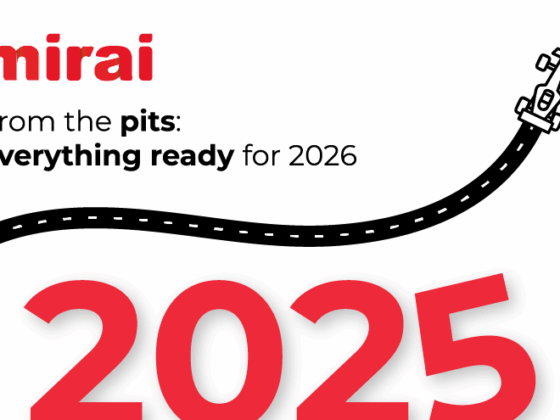
The Hidden Cost of Delayed Pricing Decisions: Why Speed is the New Currency for OTA Success
In the fast-paced, fiercely competitive world of online travel agencies (OTAs), success relies on agility. While competitive rates and broad inventory are foundational, they are no longer sufficient to secure an edge. In a market where prices can fluctuate multiple times an hour, speed has become the ultimate differentiator.
For market managers, pricing specialists, and revenue leaders, this isn’t just a technological challenge—it’s a strategic mandate. Delayed pricing decisions do more than dent profits; they compromise market share, customer trust, and long-term business sustainability.
Why Delayed Pricing Decisions Hurt More Than You Think
Speed in pricing is not just about operational efficiency; it directly impacts your ability to compete and thrive. Research highlights a critical 15-minute window within which OTAs must respond to competitor price changes to maintain their relevance. Failing to act within this timeframe leads to cascading consequences.
Overpriced inventory pushes customers toward competitors, while underpriced inventory slashes profit margins. Beyond the financial hit, inconsistent or slow responses to market shifts can undermine customer trust, eroding the very loyalty OTAs work so hard to build.
These delays provide competitors with opportunities to capture demand surges, lock in bookings, and secure a foothold in price-sensitive customer segments. In a market driven by immediacy, being slow is no longer an inconvenience—it’s a liability.
What’s Holding OTAs Back?
Despite technological advancements, many OTAs are hindered by outdated systems and workflows. Traditional pricing models, developed for less volatile markets, are ill-suited for today’s dynamic environment.
Approval chains are a major bottleneck, as pricing decisions often pass through multiple levels of review. While oversight ensures accuracy, it also slows the process, making decisions irrelevant by the time they’re implemented. Adding to the challenge are legacy data systems that rely on batch processing, creating lags in detecting and responding to market shifts.
Even when pricing decisions are made, manual updates across multiple distribution channels introduce further delays and the risk of errors. These inefficiencies are not just operational nuisances—they are structural weaknesses that limit an OTA’s ability to compete.
Why Speed is the Ultimate Game-Changer
The ability to act swiftly in pricing decisions isn’t just about being reactive—it’s about proactively shaping market dynamics to your advantage. OTAs that prioritize speed unlock significant benefits, including:
- Demand Optimization: Capturing bookings during high-demand periods by reacting faster than competitors.
- Margin Preservation: Avoiding unnecessary discounts while remaining competitive for price-sensitive travelers.
- Customer Retention: Building trust by consistently offering competitive and timely rates.
- Market Leadership: Positioning your brand as a reliable and responsive player in the travel ecosystem.
When OTAs respond promptly, they create a virtuous cycle. Increased revenue supports further investment in technology and process improvements, while operational efficiency reduces costs and improves team morale. Over time, this agility becomes a defining characteristic, setting leaders apart from laggards.
Building a Framework for Pricing Agility
Transforming pricing operations starts with adopting a mindset that prioritizes speed without compromising quality. Technology is at the heart of this transformation. OTAs must invest in real-time data systems that provide continuous insights into competitor rates and market demand. Artificial intelligence (AI) and machine learning can offer predictive capabilities, enabling pricing teams to anticipate trends and act proactively.
However, technology alone isn’t enough. Processes must also be reengineered to eliminate inefficiencies. Streamlining approval workflows is critical, allowing teams to make decisions quickly while maintaining accountability. Automating rate updates across distribution channels ensures that pricing changes are implemented accurately and without delay.
Upskilling is equally important. As automation takes over routine tasks, pricing and revenue managers must focus on strategic activities like market analysis, pattern recognition, and long-term planning. Empowering teams with the right tools and training ensures that they can make the most of a speed-oriented pricing framework.
Measuring the Impact of Faster Pricing Decisions
The value of speed can be measured in tangible and intangible ways. Revenue managers can track metrics like response times—the duration between detecting a market shift and implementing a pricing adjustment—and analyze how these times correlate with booking rates, revenue per available room (RevPAR), and market share.
Customer behavior is another critical metric. Faster, more consistent pricing decisions often result in improved customer loyalty, as travelers come to trust an OTA’s ability to offer competitive rates in real-time. Operational metrics, such as reduced errors in rate updates and improved team productivity, also highlight the broader benefits of investing in speed.
These insights make it easier to build a case for continued investment in pricing agility, showing how small changes in response times can lead to significant financial and reputational gains.
The Future of Pricing: Beyond Reaction to Proactive Strategy
As the OTA landscape evolves, speed will remain a cornerstone of pricing strategy—but the focus will shift from reacting quickly to anticipating change. Emerging technologies like machine learning and dynamic pricing algorithms are paving the way for OTAs to move beyond real-time adjustments and into proactive pricing.
Imagine a system where rates adjust automatically based on predictive insights, taking into account factors like historical booking patterns, competitor behavior, and market demand forecasts. Dynamic packaging, where bundled offers are adjusted in real-time, represents another frontier for OTAs looking to differentiate themselves.
While these advancements hold promise, they also underscore the need for continuous improvement. Regular audits of pricing processes, investments in advanced tools, and ongoing team training will ensure that OTAs remain competitive in an increasingly fast-paced market.
Conclusion: Act Fast or Fall Behind
In today’s OTA market, speed has become the currency of success. For market managers, pricing specialists, and revenue leaders, the ability to respond swiftly to market changes isn’t just a competitive advantage—it’s a necessity.
Delayed pricing decisions don’t just hurt revenue; they erode trust, compromise market share, and leave long-term growth opportunities on the table. But with the right combination of technology, process optimization, and team empowerment, OTAs can turn speed into their greatest asset.
The travel industry waits for no one, and the gap between those who act quickly and those who don’t is growing every day. The question isn’t whether you can afford to invest in speed—it’s whether you can afford not to. The time to act is now because, in this race, only the swift will thrive.







